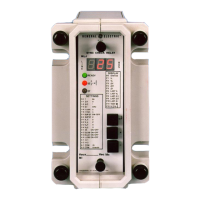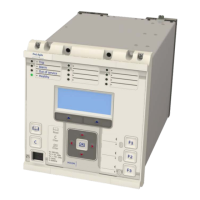Where fibre optic communication devices are fitted, these should not be
viewed directly. Optical power meters should be used to determine the operation
or signal level of the device.
4. OLDER
PRODUCTS
Electrical adjustments
Equipments which require direct physical ad ustments to their operating
mechanism to change current or voltage settings, should have the electrical
power removed before making the change, to avoid any risk of electrical shock.
Mechanical adjustments
The electrical power to the relay contacts should be removed before checking any
mechanical settings, to avoid any risk of electric shock.
Draw out case relays
Removal of the cover on equipment incorporating electromechanical operating
elements, may expose hazardous live parts such as relay contacts.
Insertion and withdrawal of extender cards
When using an extender card, this should not be inserted or withdrawn from the
equipment whilst it is energised. This is to avoid possible shock or damage
hazards. Hazardous live voltages may be accessible on the extender card.
Insertion
and
withdrawal
of heavy
current
test
plugs
When using a heavy current test plug, CT shorting links must be in place before
inserti
on or removal, to avoid potentially lethal voltages.
5.
DECOMMISSIONING
AND
DISP
OSAL
Decommissioning:
The auxiliary supply circuit in the relay may include
capacitors across the supply or to earth. To avoid electric
shock or energy hazards, after completely isolating the supplies
to the relay (both poles of any dc supply), the capacitors should
be safely discharged via the external terminals prior to
decommissioning.
Disposal:
It is recommended that incineration and disposal to
water courses is avoided. The product should be disposed of in
a safe manner. Any products containing batteries should have
them removed before disposal, taking precautions to avoid
short circuits. Particular regulations within the country of
operation, may apply to the disposal of lithium batteries.

